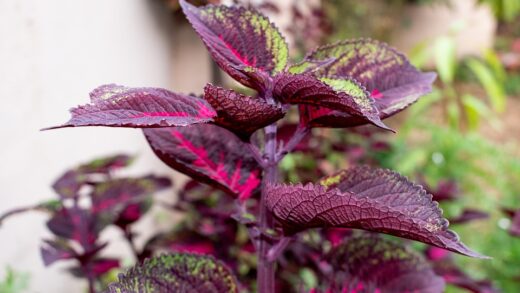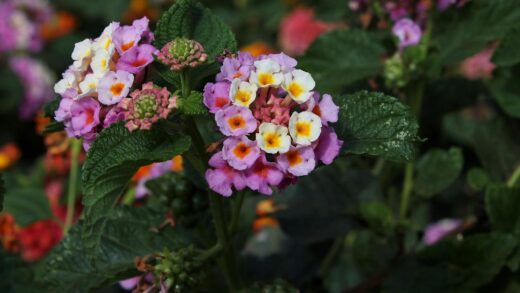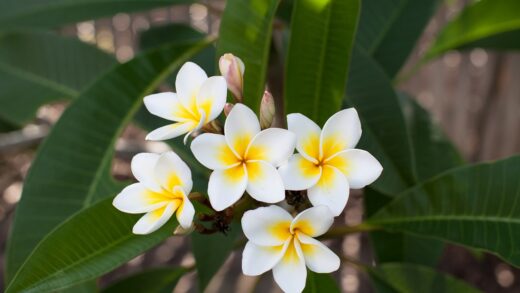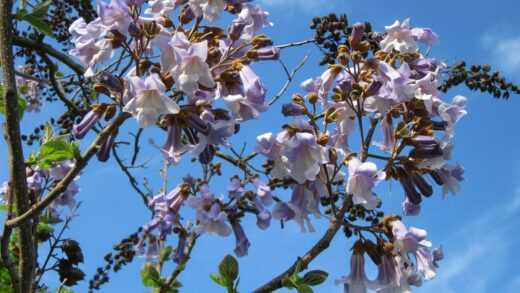Understanding and providing the correct amount of light is arguably the most fundamental factor in successfully cultivating a vibrant and floriferous common mallow. Light is the primary source of energy for nearly all plants, driving the critical process of photosynthesis which fuels all growth, from the development of roots and leaves to the production of its charming flowers. While common mallow is known for its adaptable and resilient nature, its performance is directly correlated with the quantity and quality of light it receives. This expert article will delve into the specific light requirements of this garden favorite, exploring the difference between full sun and partial shade and outlining the symptoms of both insufficient and excessive light exposure, empowering you to select the perfect site for your plant to thrive.
The relationship between a plant and sunlight is the very essence of its existence. For the common mallow, this relationship is one that thrives on generosity. This plant is a true sun-lover, and its genetic makeup is programmed to perform best when bathed in bright, direct light for a significant portion of the day. When provided with ample sunlight, the plant is able to photosynthesize at an optimal rate. This high rate of energy production translates directly into strong, sturdy stems, lush foliage, and, most importantly, a prolific display of flowers over a long season. Choosing a location that satisfies this need for sun is the single most important decision you will make for the health and beauty of your mallow.
It is helpful to think of sunlight as the plant’s food. While water and soil nutrients are essential, they are the ingredients; sunlight is the energy that allows the plant to cook its meal. Without enough energy, the plant simply cannot perform all of its necessary functions to its full potential. It will be forced into a survival mode, rationing its limited energy reserves. This rationing process invariably means that flowering, which is an energy-intensive process aimed at reproduction, will be one of the first things to be sacrificed. Therefore, a lack of flowers on a mallow is very often, first and foremost, a light issue.
The quality of the light is also a factor to consider. The intense, direct light of the midday and afternoon sun is what truly fuels the most vigorous growth. Morning sun is beneficial and less harsh, but a location that is shaded for the entire afternoon will likely not provide the total amount of light energy the plant needs for a spectacular floral display. When you are assessing potential planting spots in your garden, it is crucial to observe them throughout a full day to get an accurate picture of how many hours of direct, unimpeded sunlight the area receives. This simple observation is the key to siting your common mallow for success.
The importance of sunlight for photosynthesis
To fully appreciate why common mallow needs so much light, it is essential to understand the basic process of photosynthesis. This is the remarkable biochemical process by which plants use sunlight, water, and carbon dioxide to create their own food in the form of glucose (a type of sugar). This glucose is the energy source that powers every aspect of the plant’s life, from the growth of a new leaf to the opening of a flower bud. The chlorophyll in the leaves, which gives them their green color, is the molecule responsible for capturing the energy from sunlight to drive this process.
More articles on this topic
The rate of photosynthesis is directly proportional to the intensity and duration of light exposure, up to a certain point. A common mallow placed in a full sun position, receiving six or more hours of direct sunlight, will be able to photosynthesize at a high rate throughout the day. This results in a surplus of energy. This surplus allows the plant not only to grow and maintain its basic functions but also to invest heavily in reproduction, which for a gardener, means a magnificent and prolonged blooming period. The plant has enough energy to produce strong stems, healthy leaves, and an abundance of flowers.
In contrast, a plant situated in a shadier spot receives significantly less light energy. This forces the plant to make compromises. The rate of photosynthesis will be lower, resulting in a much smaller energy budget. The plant will prioritize survival over reproduction. It will often develop larger, thinner leaves in an attempt to maximize the surface area for capturing the limited available light. This results in a plant that may look leafy but produces very few, if any, flowers. The energy simply is not there to support the demanding process of blooming.
Furthermore, adequate sunlight plays a crucial role in the overall health and structure of the plant. Plants that receive enough light tend to be more compact, with strong, self-supporting stems. The intense light helps to keep the growth dense and sturdy. This structural integrity makes the plant less prone to flopping over and more resilient to wind and rain. It also contributes to better disease resistance, as the sunlight helps to keep the foliage dry, creating a less hospitable environment for fungal pathogens like rust and powdery mildew.
Ideal light exposure: full sun to partial shade
The ideal light exposure for common mallow is unequivocally full sun. In horticultural terms, “full sun” is defined as a location that receives at least six hours of direct, unfiltered sunlight per day. For the best possible performance, a spot that receives eight or more hours of sunlight is even better. This is especially true in more northern latitudes where the sun’s intensity is naturally lower. A position in an open area, away from the shadow of buildings, trees, or large shrubs, is perfect for meeting these needs and will result in the most vigorous growth and prolific flowering.
More articles on this topic
While full sun is the ideal, common mallow is an adaptable plant and can tolerate conditions described as “partial shade.” It is important to understand what this term means. Partial shade does not mean dappled light all day. It typically refers to a location that receives between three and six hours of direct sun per day. Often, the best partial shade locations are those that receive several hours of direct morning sun, but are then shaded during the hottest part of the afternoon. This can be a good compromise, especially in very hot southern climates where the intense afternoon sun can sometimes cause temporary wilting or stress.
When grown in partial shade, you should expect a noticeable difference in the plant’s performance compared to one grown in full sun. The plant will likely grow taller and more “leggy” as it stretches to reach for more light. The foliage may be a darker green, but the overall structure will be less dense and more open. The most significant difference will be in the flowering; a mallow in partial shade will produce significantly fewer flowers, and the blooming period may be shorter. It will still be a pleasant plant, but it will not achieve the spectacular display it is capable of in a sunnier spot.
In deep shade, meaning a location that receives less than three hours of direct sunlight per day, common mallow will struggle to survive and will likely not flower at all. It will produce weak, spindly growth and will be highly susceptible to diseases and pests. Planting common mallow in a deeply shaded area is not recommended and will almost certainly lead to disappointment. Therefore, when choosing a planting site, you must prioritize sunlight. If you have a sunny spot, this is where your mallow will be happiest and will provide you with the greatest reward.
Symptoms of inadequate light
Recognizing the symptoms of insufficient light is a crucial diagnostic skill for any gardener. When a common mallow is not receiving enough sunlight, it will provide several clear visual cues to signal its distress. The most obvious and common symptom is a significant reduction in, or complete lack of, flowering. If your mallow is producing plenty of green leaves but has very few or no blooms, inadequate light is the most likely culprit. The plant is conserving its limited energy for basic survival and does not have the surplus required to produce flowers.
Another key symptom is etiolation, more commonly known as “legginess.” The plant’s stems will become unusually long, thin, and weak as they stretch towards the nearest light source. The spacing between the leaves on the stem, known as the internodal distance, will be much greater than on a healthy plant. This results in a sparse, floppy, and unattractive appearance. The plant may require staking to prevent it from collapsing under its own weight, a support that is typically not needed when the plant is grown in full sun.
The foliage of a light-deprived mallow will also show changes. The leaves may be larger and thinner than normal, an adaptation to try and create a larger surface area to capture as much of the available light as possible. Despite being larger, the leaves may also be a paler shade of green than is typical for a healthy, sun-grown specimen. The overall plant will lack the dense, bushy habit of its sun-loving counterparts and will appear generally weak and lacking in vigor.
In addition to these growth-related symptoms, a mallow grown in inadequate light will be more susceptible to pests and diseases. The weak, soft growth is more attractive to sap-sucking insects like aphids. Furthermore, the shaded, damp conditions and poor air circulation around the sparse foliage create a perfect breeding ground for fungal diseases like powdery mildew and the dreaded mallow rust. If you observe these symptoms, the best course of action is to transplant the mallow to a sunnier location in the garden, which will often resolve all of these issues.
The effects of excessive sun exposure
While common mallow is a sun-loving plant, it is important to acknowledge that in certain extreme conditions, there can be too much of a good thing. In very hot, arid climates, or during a particularly intense heatwave, a mallow planted in a relentlessly sunny and exposed position may show signs of stress from excessive sun and heat. This is not typically a problem in more temperate climates, but it is something that gardeners in warmer regions should be aware of.
The most common symptom of sun stress is leaf scorch. This can appear as brown, crispy edges on the leaves, or as yellow or white patches in the center of the leaf where the plant tissue has been damaged by the intense solar radiation. Another common sign is wilting during the hottest part of the day. While the plant may recover as temperatures cool in the evening, daily wilting is a sign that the plant is losing water through transpiration faster than its roots can absorb it, a process that is greatly accelerated by intense sun and heat.
To mitigate the effects of excessive sun exposure in hot climates, there are a few effective strategies. Providing the plant with some light afternoon shade can be very beneficial. A location that receives full sun in the morning and is then lightly shaded from around 2 or 3 PM onwards is often the perfect compromise. This protects the plant from the most intense and potentially damaging rays of the late afternoon sun while still providing it with more than enough light to thrive and flower profusely.
Ensuring the plant has adequate and consistent moisture is also crucial for helping it cope with intense sun. A well-watered plant is better able to keep its tissues cool and hydrated through transpiration. Applying a layer of organic mulch, such as shredded bark or compost, over the root zone is also highly effective. The mulch helps to keep the soil cool and conserves moisture by reducing evaporation, which provides a more stable and less stressful environment for the plant’s roots, enabling it to better withstand the heat and sun from above.




















